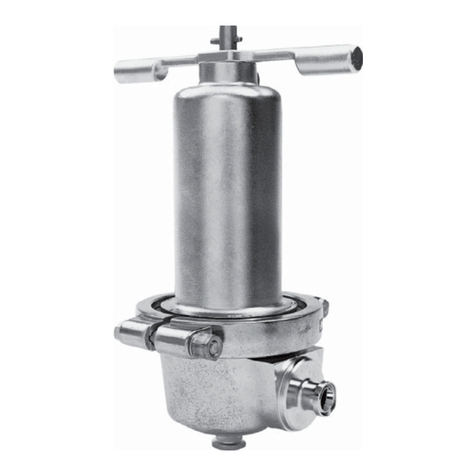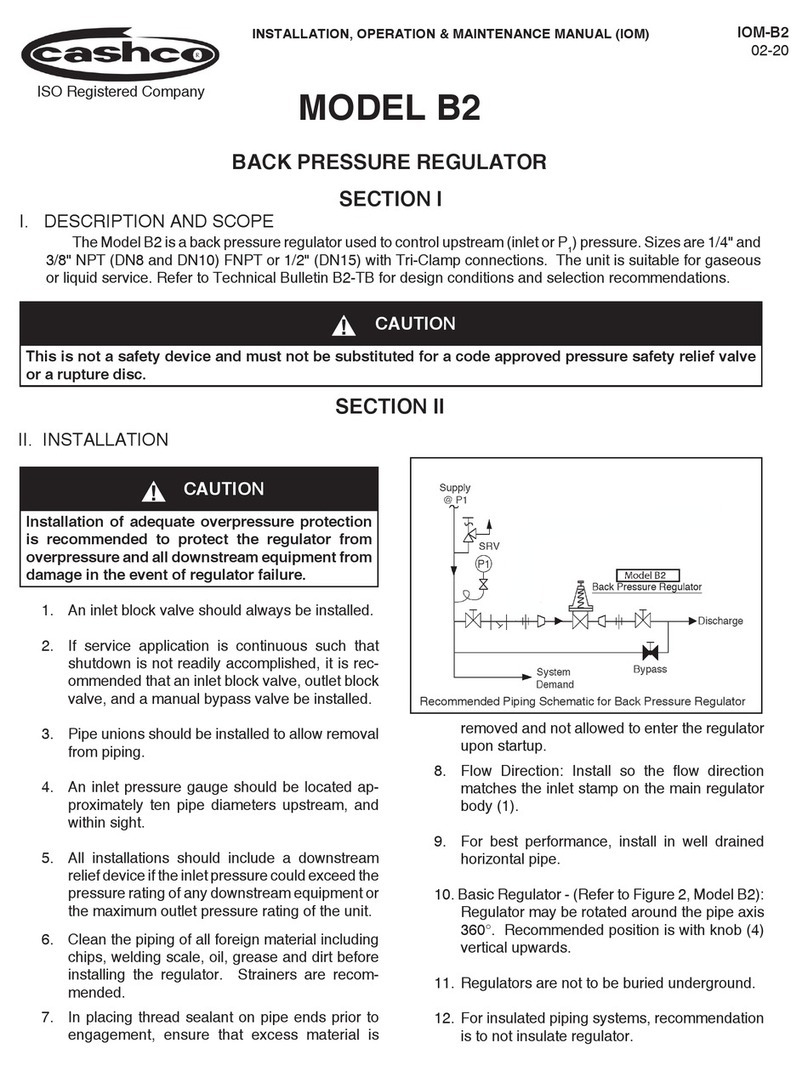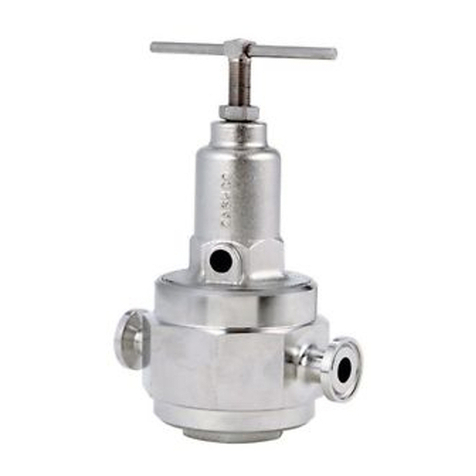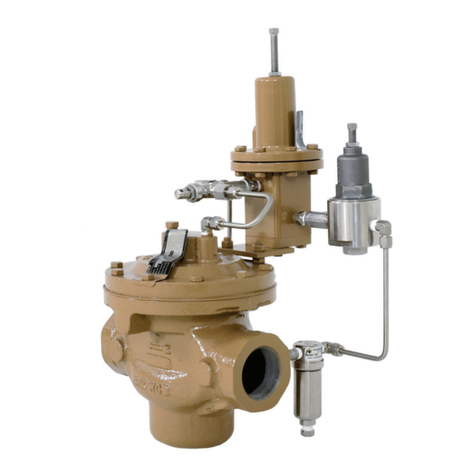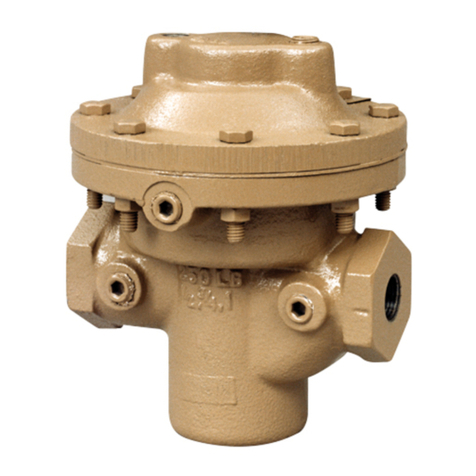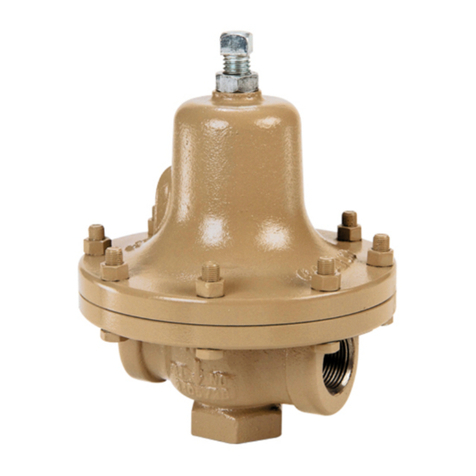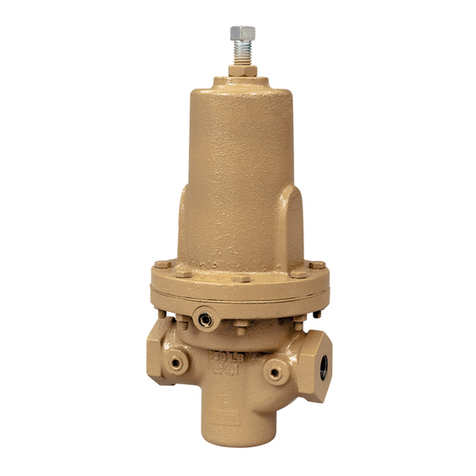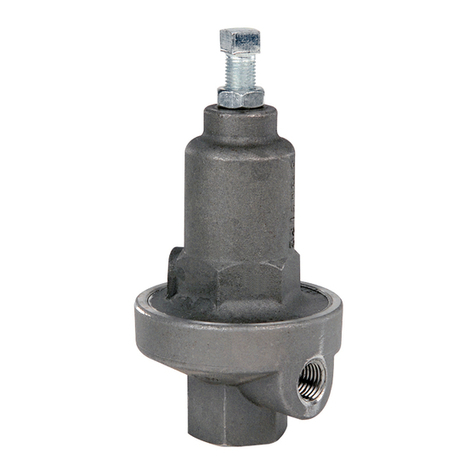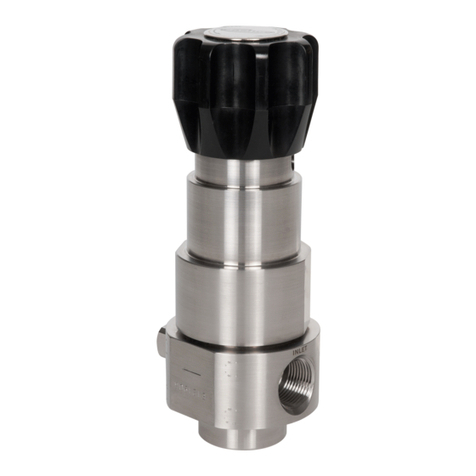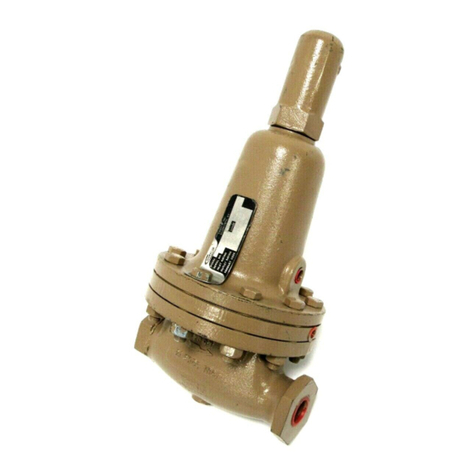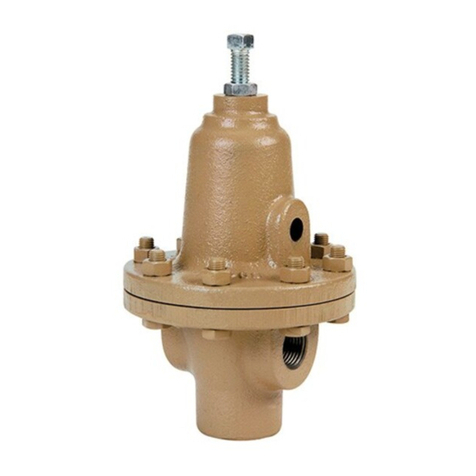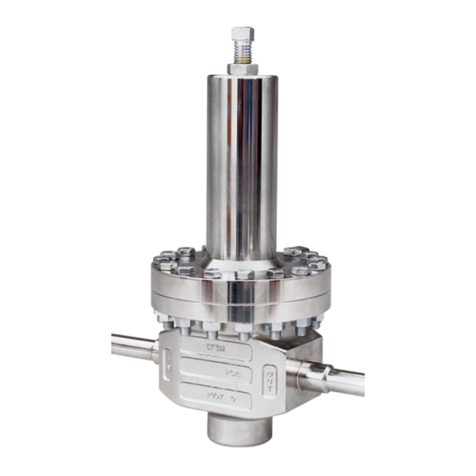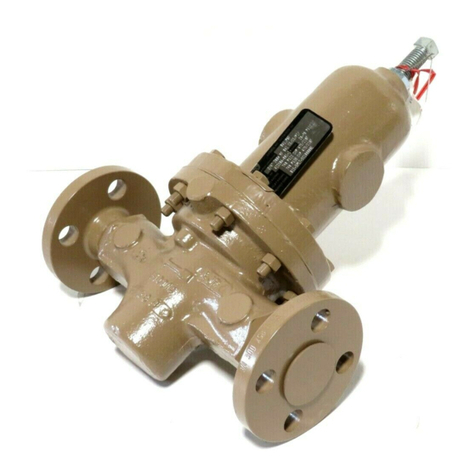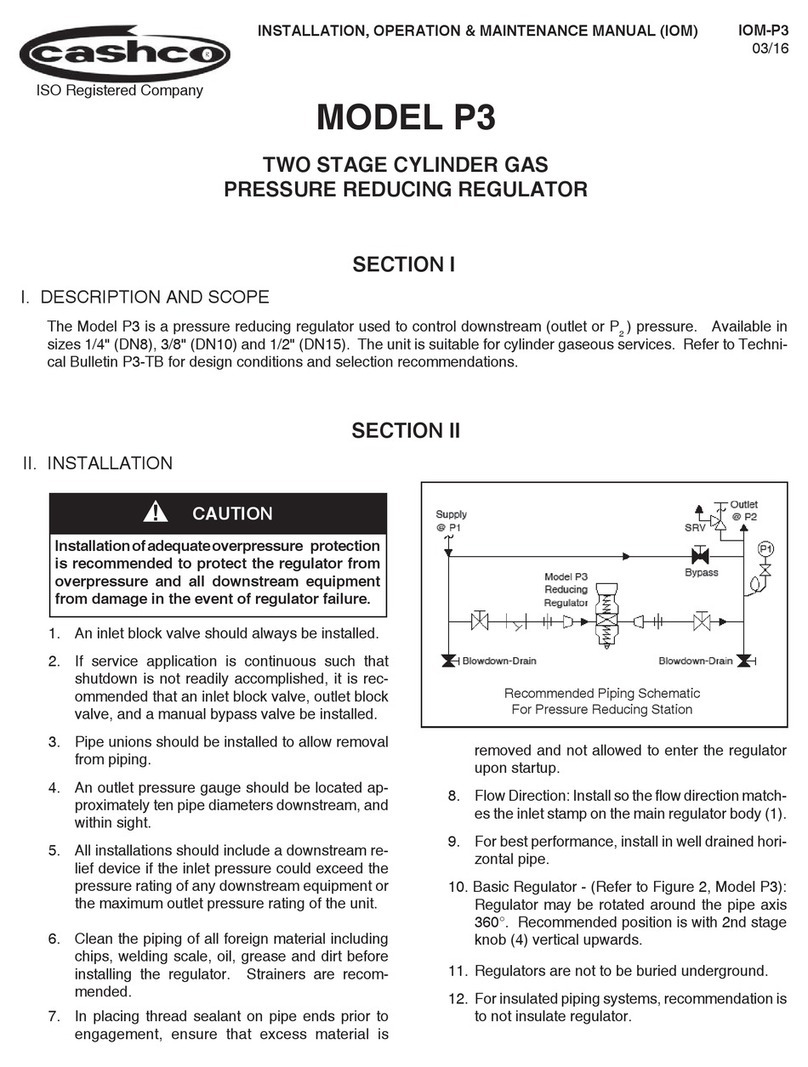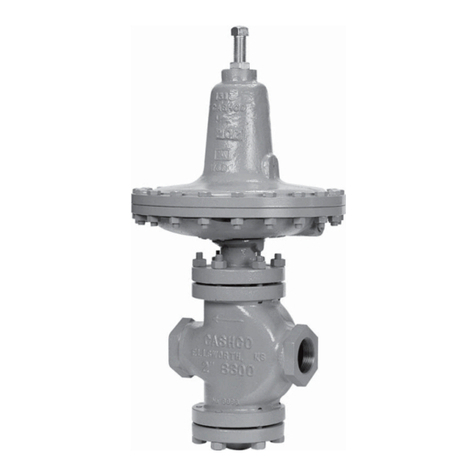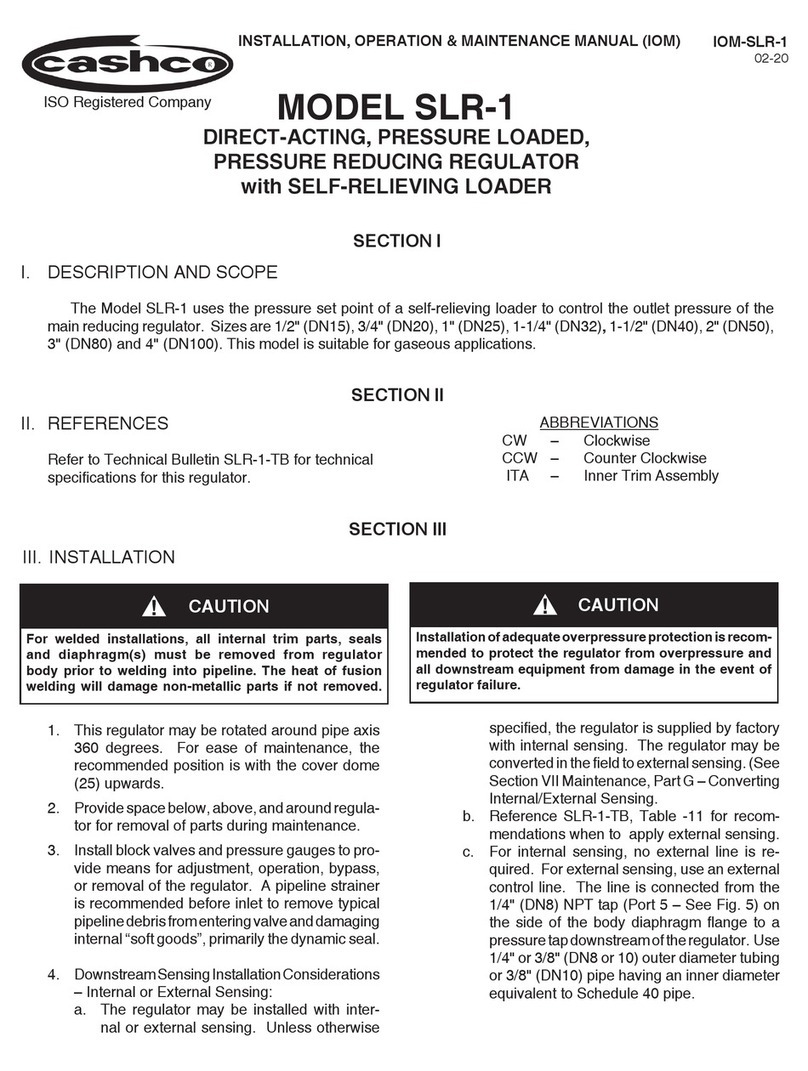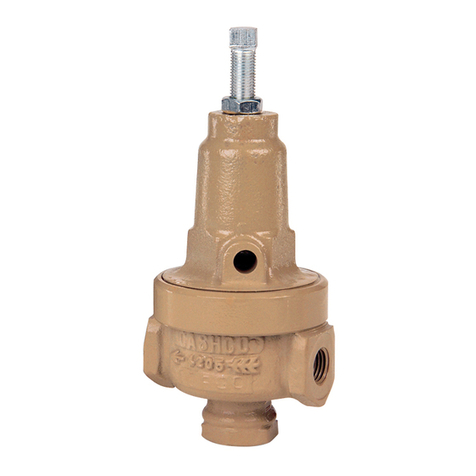
2 IOM-345
III. PRINCIPLE OF OPERATION
SECTION IV
IV. STARTUP
1. Start with the block valves closed. A bypass
valve may be used to maintain outlet pressure
in the downstream system without changing the
following steps.
2. Relax the range spring by turning the T-bar handle
adjusting screw counter clockwise (CCW) a
minimum of three (3) full revolutions. This reduces
the outlet (downstream) pressure set point.
3. If it is a "hot" piping system, and equipped with
a bypass valve, slowly open the bypass valve
to pre-heat the system piping and to allow slow
expansion of the piping. Closely monitor outlet
(downstream) pressure via gauge to assure not
over-pressurizing. NOTE: If no bypass valve is
installed, extra caution should be used in starting
up a cold system; i.e. do everything slowly.
4. Crack open the outlet (downstream) block valve.
5. Slowly open the inlet (upstream) block valve
observing the outlet (downstream) pressure
gauge. Determine if the regulator is flowing. If not,
slowly rotate the regulator T-bar adjusting screw
handle clockwise (CW) until flow begins.
SECTION V
V. SHUTDOWN
1. On systems with a bypass valve, and where system
pressure is to be maintained as the regulator is
shut down, slowly open the bypass valve while
closing the inlet (upstream) block valve. Fully
close the inlet (upstream) block valve. (When on
bypass, the system pressure must be constantly
observed and manually regulated.) Close the
outlet (downstream) block valve.
SECTION III
Movement occurs as pressure variations register on the pressure piston. The registering pressure is the outlet, P2,
or downstream pressure. The range spring opposes pressure piston movement. As outlet pressure drops, the range
spring pushes the pressure piston down, opening the port; as outlet pressure increases, the pressure piston pushes
up and the port opening closes.
Do not walk away and leave a bypassed regulator
unattended!
CAUTION
6. Continue to slowly open the inlet (upstream) block
valve until fully open.
7. Continue to slowly open the outlet (downstream)
block valve, especially when the downstream
piping system isn't pressurized. If the outlet
(downstream) pressure exceeds the desired
pressure, close the block valve and go to Step 2,
then return to Step 4.
8. When flow is established steady enough that the
outlet (downstream) block valve is fully open,
begin to slowly close the bypass valve if installed.
9. Develop system flow to a level near its expected
normal rate, and reset the regulator set point by
turning the T-bar adjusting screw handle CW to
increase outlet pressure, or CCW to reduce outlet
pressure.
10. Reduce system flow to a minimum level and
observe set point. Outlet pressure will rise from
the set point of Step 9. The maximum rise in outlet
pressure on decreasing flow should not exceed the
stated upper limit of the range spring by greater
than 10%; i.e. 500 to1000 psig (34.5 to 68.9 Barg)
range spring, at low flow the outlet pressure should
not exceed 1100 psig (75.8 Barg), if it does, consult
factory.
2. If the regulator and system are to both be
shutdown, slowly close the inlet (upstream) block
valve. Close the outlet (downstream) valve only if
regulator removal is required.

